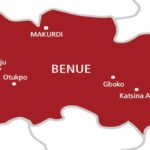Tuesday August 21, 2018 which was equivalent to 10th Dhul-Hijjah 1439AH was the Eidul-Kabir day. We left our tent in Mina to throw seven pebbles at the large pillar(Jamratul-Aqbah) which is the pillar nearest to Makkah.The throwing of stones at the Jamrah site is now so organized that pilgrims are far from experiencing any stampede. First, the roads that take pilgrims from their respective tents at Mina to the Jamrah site are fantastically wide. Second, pilgrims are to move on the roads in a one-way-traffic manner because they are required (after throwing pebbles at the Jamrah site) to proceed on the same road either to Makkah or back to their tents without turning back to meet on-coming pilgrims. The roads separately take the pilgrims through long distances to return to their respective tents. In this manner, pilgrims who have thrown their pebbles would never meet those on their way to Jamrah site.
Third, no vehicles are allowed to move on the roads that lead from the various tents in Mina to Jamrah sites as well as from Jamrah sites to a certain point beforeMakkah. One loathsome scene on the roads to Jamrah site was the sight of beggars; mostly women and children who because of the Hausa they speak are supposedly Nigerians commonly referred to as Takari. While Pakistan, India and Bangladesh export labour to Saudi Arabia as salesmen, drivers and cleaners; it is unfortunate that Nigeria exports destitution to the holy land.
We were required to offer animal sacrifice on the same day but the Custodian of the Two Holy Mosques had already taken care of it for us. We were also expected on the same day to perform Tawaful-Ifadah, a compulsory act of Hajj; but pilgrims had the option to delay it by one or more days for fear of congestion at the Ka’abah.
Before our return from Jamrah site, a group of barbers had been arranged in a section of our camp at Mina to shave or cut the hair of pilgrims as required inHajj rites. As guests of the king, we were not to pay the barbers. While on the queue to shave my head at the barbers’ podium, a colleague-guest from Czech Republic (a young man) behind whom I was standing requested me to explain to the barber (in Arabic) to shave all the hair on his head as well as his beard. The barber asked me to tell the Czech colleague that his blade does not shave beard because keeping beard is a prophetic practice. After shaving, we pulled out form our Ihram clothes; signifying that the hajj rites which placed restrictions on pilgrims were over.
After taking some rest, I and AlhajiNaibi decidedto stretch our legs by visiting our relations that were also on pilgrimage. Because no commercial taxicabs operate in Mina, it was indeed a long walk. After quite a long distance, we saw a signpost indicating “African Section” which I thought was discriminatory because I did not see any signpost in Minadenoting Asian, European or American section.The tents assigned to Nigerian pilgrims were located at the tail end of Mina after which there is no other tent. At the back of the site assigned to Nigerian pilgrims stood a tall signpost carrying the inscription “END OF MINA” and another large signpost that bore “BEGINNING OF MUZDALIFAH”.
The location assigned to Nigerian pilgrims in Mina is the farthest distance trekked by any pilgrim from his/her tent to the Jamrah site. This was the same arrangement I found when I went from Sudan to perform my first hajj in 1994.I wonder why Nigerian authorities have not protested this mistreatment over the years. As we left the Nigerian location, the things I saw includingimmoralliaison between men and women and the littering of environment sadly punctured my apprehensions.After we threw pebbles at the three Jamrahpillars on Wednesday August 22 and Thursday August 23,we returned the same Thursday to CasablancaHotel, our lodge in Makkah.Welaer performed Tawaful-Wada’ithe same Thursday and depatedMakkahin the usual luxury buses about 12 midnight; arriving Madinah by Friday morning August 24, 2018. We had some hours of rest before we went to the Prophet’s mosque to observe the Jumu’ah congregationalprayer. Our lodge in Madinah was Crown Plaza.
On Sunday August 26, 2018 we visitedthe site where battle of Uhud was fought and the MasjiduQuba which was the first mosque built by the Prophet (SAW) on his arrival in Madinah after migrating from Makkah. We were also taken to the Holy Qur’an Printing Complex where the technical procedures involved in printing the holy Book of Islam were explained to us. By 7pm same day, we were seated in the bus to be taken to Madinah airport for our return journey to Nigeria. Our tour guide soon joined us in the bus and gave each of us a copy of the holy Qur’an, a pack of dates specially made for the King’s guests, a plaque and a Samsung Android phone. As we came down from the bus at Madinah airport, we were given a gallon of Zamzam water. We spent the next 15 hours traveling by air through Jeddah and Cairo airports; and arrived Abuja airport at about 1pm. That’s the stoy of our two weeks Hajj trip
The expansion project at the Masjdul-Haram mosque in Makkah is a commendable capital intensive project designed to reduce congestion in the mosque. The systematic management of crowd by security agencies during the hajj period is a model from which even technologically-driven societies could learn. While we thank the Custodian of the Two Holy Mosques for his benevolence, we ask Him to reward you, too, for literally being part of the 2018 Hajjon this page, amin.
 Join Daily Trust WhatsApp Community For Quick Access To News and Happenings Around You.
Join Daily Trust WhatsApp Community For Quick Access To News and Happenings Around You.


